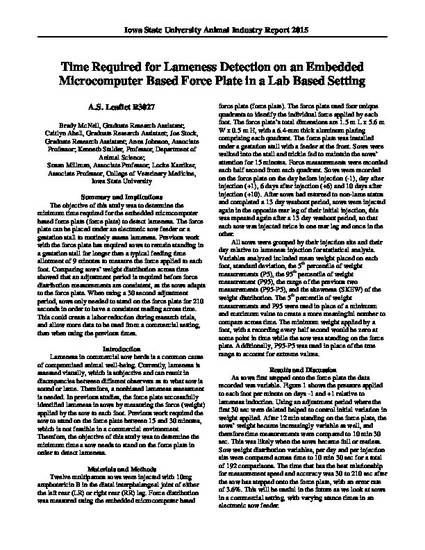
The objective of this study was to determine the minimum time required for the embedded microcomputer based force plate (force plate) to detect lameness. The force plate can be placed under an electronic sow feeder or a gestation stall to routinely assess lameness. Previous work with the force plate has required sows to remain standing in a gestation stall for longer than a typical feeding time allotment of 9 minutes to measure the force applied to each foot. Comparing sows’ weight distribution across time showed that an adjustment period is required before force distribution measurements are consistent, as the sows adapts to the force plate. When using a 30 second adjustment period, sows only needed to stand on the force plate for 210 seconds in order to have a consistent reading across time. This could create a labor reduction during research trials, and allow more data to be used from a commercial setting, than when using the previous times.
Available at: http://works.bepress.com/kenneth_stalder/115/
